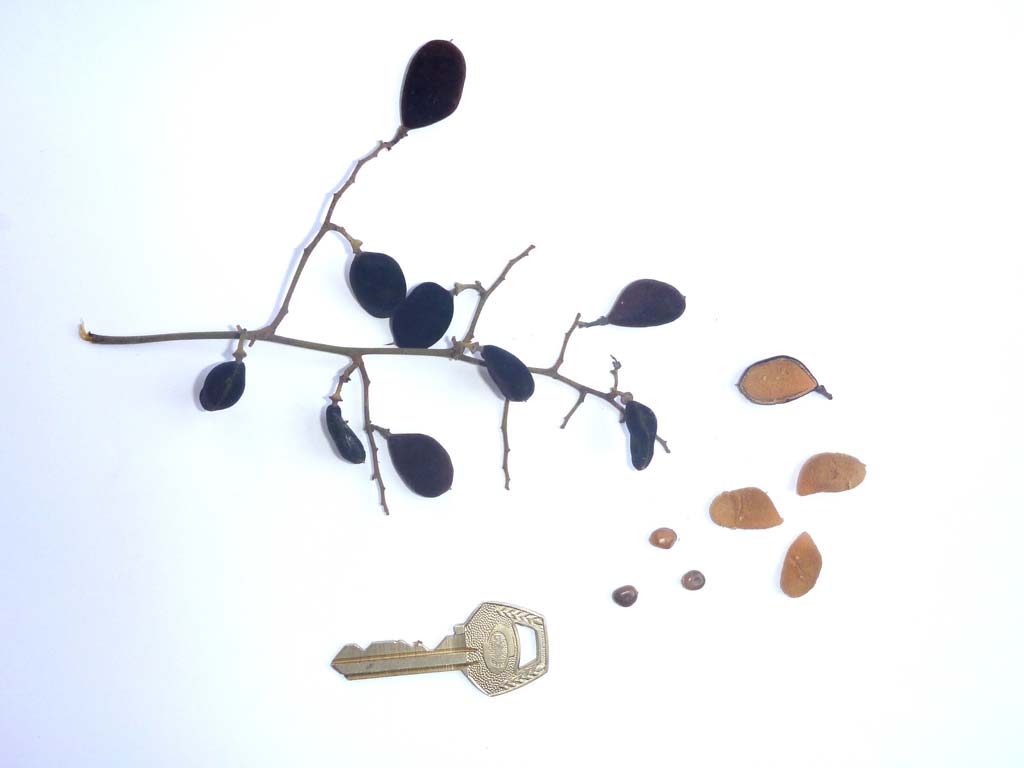
24 Jul Dialium guineense
Scientific name: Dialium guineense Willd.
Family: Leguminosae.
Distribution/conservation status: widespread and common in dense savanna forests and gallery forests. Not assessed by the IUCN Red List.
Common names: Velvet-tamarind, Black tamarind (English), Chaleku, Icheku (Igbo), Awin (Yoruba), Uge (Edo)
Fruits/seeds: black, velvety, almost circular and flattened pod containing one (rarely two) smooth, stony, shiny-black seed embedded in dry, orange to brown, sweetly acidic and edible pulp.
Fruiting time: October – January.
Seed collection: ripe fruit fall off parent tree and can collected from the ground. Break pod/shell; lick or wash off the pulp from seeds.
Type of seed: orthodox.
Sowing method: take protective measures to protect face and hands then scarify seeds in concentrated sulphuric acid, stirring continuously for 7 minutes before sowing at a depth of 2cm.
Sowing medium: forest soil.
Germination period: 7 – 14 days.
Germination percentage: 60%.
Growth/development: seedlings require partial shade; growth is quite slow. Plant out after about 4 months. Trees take c. 4 years to start fruiting.
Notes: seeds should be watered at least twice a day after sowing.

Pterocarpus erinaceus leaf. credits: O.Olubodun

